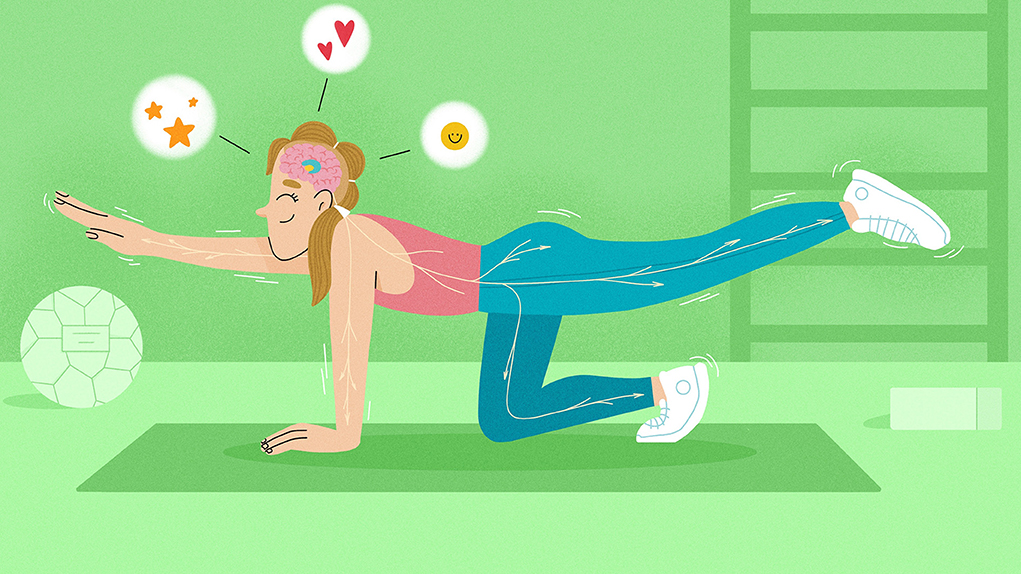
Yoga is an ancient practice that has been practiced thousands of times, forming in India as both a spiritual and physical discipline. Over the times, it has converted into an considerably admired form of exercise that provides numerous health benefits. Scientific studies have corroborated multitudinous yoga’s assertions, showing that it can enhance both physical and internal well- being. But what precisely transpires in the body and mind when you exercise yoga? If you want to start doing yoga then these are 15 Essential Yoga Poses for Beginners.
1. How Yoga Affects the Brain

One of the most intriguing rudiments of yoga is its influence on the brain. Research has demonstrated that yoga can positively affect brain function, cognitive capacities, and internal wholesomeness.
- Enhances Brain Structure
harmonious yoga practice has been associated with differences in brain structure. Studies using MRI reviews have indicated that individualities who exercise yoga have increased gray matter in areas linked to memory, attention, and tone- awareness. The hippocampus, which is essential for memory conformation, tends to be larger in yogis compared to those who do n’t exercise yoga.
- Reduces Stress and Anxiety
Yoga is considerably recognized for its benefits in reducing stress. When you exercise yoga, your body decreases cortisol situations, the hormone that causes stress. Deep breathing and mindfulness help spark the parasympathetic nervous system, which soothes the body and diminishes the” fight- or- flight” response. This can be especially salutary for individualities dealing with anxiety and depression.
- Improves Focus and Mental Clarity
rehearsing yoga sharpens attention and internal clarity by fostering mindfulness. mindfulness involves concentrating on the present moment and minimizing distractions. disquisition indicates that mindfulness- predicated practices, including yoga, enhance attention span and working memory, making it simpler to stay focused on quotidian tasks.
2. The Physical Benefits of Yoga

Yoga is n’t solely about relaxation and mindfulness; it also provides substantial physical benefits that promote overall well- being.
- Increases strictness and Mobility
One of the most honored advantages of yoga is the enhancement of strictness. As you perform various acts, your muscles stretch and come more supple. This is especially salutary for individualities who witness stiffness due to dragged sitting or a lack of physical exertion.
- Builds Strength
Numerous yoga poses bear you to support your own body weight, abetting in the development of strength in pivotal areas analogous as the core, legs, and arms. Poses like Plank, Warrior, and over- Facing doggy engage multiple muscle groups and meliorate muscular abidance.
- Enhances Posture and Spinal Health
Poor posture can affect in habitual rear pain and discomfort. Yoga aids in correcting posture by strengthening the core muscles and adding spinal strictness. Regular practice of postures like Mountain Pose and Cobra Pose can lead to a healthier, more aligned spine.
- Boosts Gyration and Heart Health
Yoga enhances blood gyration, icing that oxygen and nutrients are effectively supplied to all body apkins. Specific acts, analogous as Inversions( e. g., Legs- Up- The- Wall Pose), aid in boosting blood flux to the brain, easing internal fatigue. also, yoga has demonstrated its capability to drop blood pressure and meliorate heart rate variability, both pointers of a healthy cardiovascular system.
- Supports Joint Health and Alleviates Pain
For individualities passing common pain, yoga can serve as a gentle yet effective system to enhance mobility. Low- impact movements grease common lubrication and reduce stiffness. Conditions analogous as arthritis, lower posterior pain, and indeed migraines can show improvement with harmonious yoga practice.
3. The part of Yoga in Mental Health

Yoga is an important resource for internal well- being. By integrating deep breathing, movement, and awareness, yoga aids in emotional regulation and fosters internal equilibrium.
- Helps with Depression and Emotional Balance
Yoga can extensively palliate symptoms of depression. The combination of movement and controlled breathing enhances the product of serotonin and dopamine, the “ feel- good ” chemicals in the brain. numerous studies indicate that individuals who exercise yoga regularly report better mood and a reduction in depressive symptoms.
- Encourages Better Sleep
Floundering with sleep? Yoga may give a result. Practices analogous to Yin Yoga and Yoga Nidra emphasize relaxation and deep breathing, which spark the parasympathetic nervous system and encourage peaceful sleep. disquisition indicates that yoga can help individualities in falling asleep more swiftly and perfecting sleep quality by easing stress and calming the nervous system.
- Enhances tone- mindfulness and Emotional Regulation
Yoga fosters tone- mindfulness by nurturing a connection between the body and mind. This increased mindfulness can help individualities in managing their passions more effectively, responding to stress more, and cultivating a sense of inner tranquility.
4. Yoga and the Immune System

Yoga has a significant impact on vulnerable function, abetting the body in combating ails more effectively.
- Reduces Inflammation
Habitual inflammation is associated with various health issues, including heart complaint, diabetes, and autoimmune conditions. Yoga has been shown to lower inflammatory markers in the body, abating the liability of developing habitual ails.
- Boosts immunity
Yoga’s blend of movement, breathwork, and relaxation fortifies the vulnerable system. Deep breathing ways, analogous as Pranayama, enhance lung function and increase oxygen input, which supports overall vulnerable health.
- Supports Gut Health
Emerging disquisition indicates that stress can negatively affect gut health, leading to digestive problems and weakened immunity. Since yoga alleviates stress, it indirectly promotes a healthier gut microbiome, which plays a vital part in vulnerable function.
5. The Science of Breathing Pranayama and Its Benefits

Pranayama, or yogic breathing, is a vital element of yoga practice. It offers numerous physiological and cerebral advantages.
- Enhances Oxygen Supply
Deep breathing increases oxygen input and boosts lung capacity. This results in better overall respiratory function and advanced energy situations.
- Balances the Nervous System
Pranayama activates the parasympathetic nervous system, which reduces stress and enhances relaxation. ways like Alternate Nostril Breathing( Nadi Shodhana) and Ujjayi Breathing contribute to calming the mind and reducing anxiety.
- Improves Mental Clarity and Focus
Research indicates that regulated breathing ways can boost cognitive performance and improve attention. This renders pranayama a precious resource for scholars, professionals, and anyone looking to boost mental performance.
Conclusion
The science behind yoga is compelling, offering both physical and mental health benefits. By incorporating yoga into your daily routine, you can improve flexibility, build strength, enhance brain function, and reduce stress. Scientific research continues to validate yoga’s role in overall well-being, making it a powerful practice for modern living.
Whether you’re looking to relieve stress, improve fitness, or find inner peace, yoga provides a holistic approach to health. So, roll out your yoga mat, take a deep breath, and embark on a journey of self-discovery and well-being!
Source
– https://en.wikipedia.org/wiki/Yoga
– https://www.medicalnewstoday.com/articles/286745
– https://www.hopkinsmedicine.org/health/wellness-and-prevention/9-benefits-of-yoga


[…] 3. Yoga benefits Mental Clarity and Focus […]